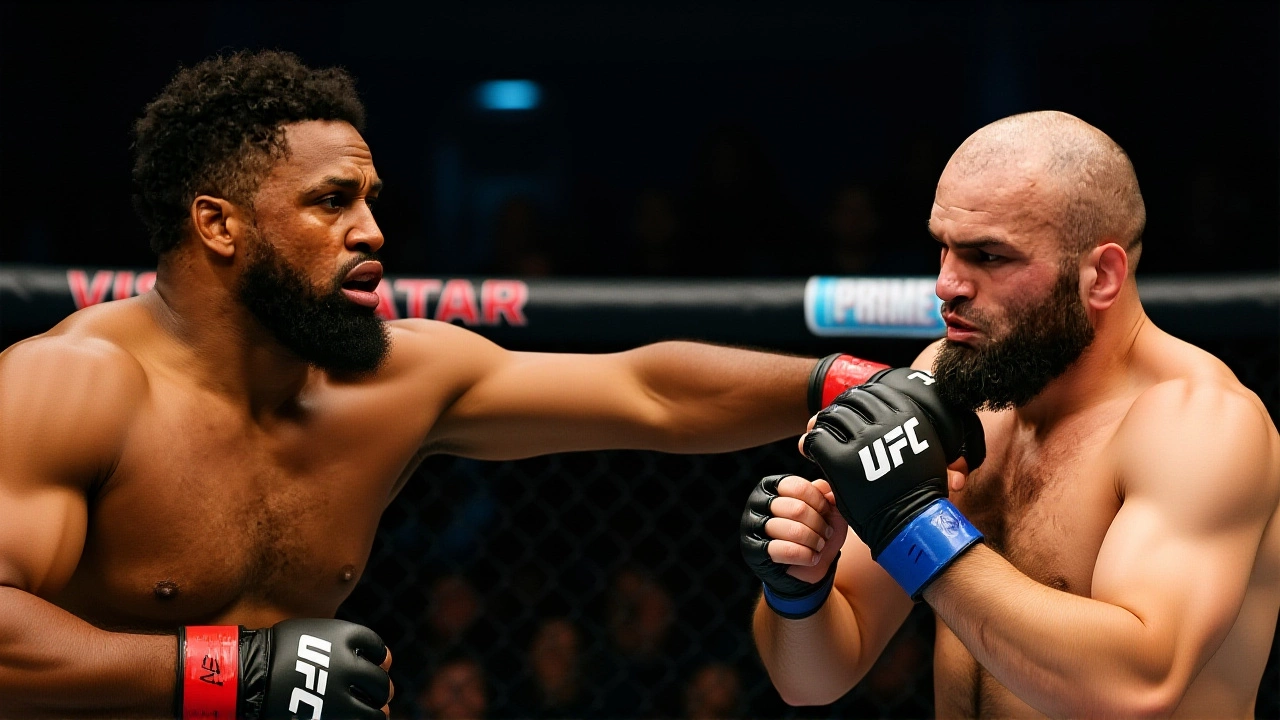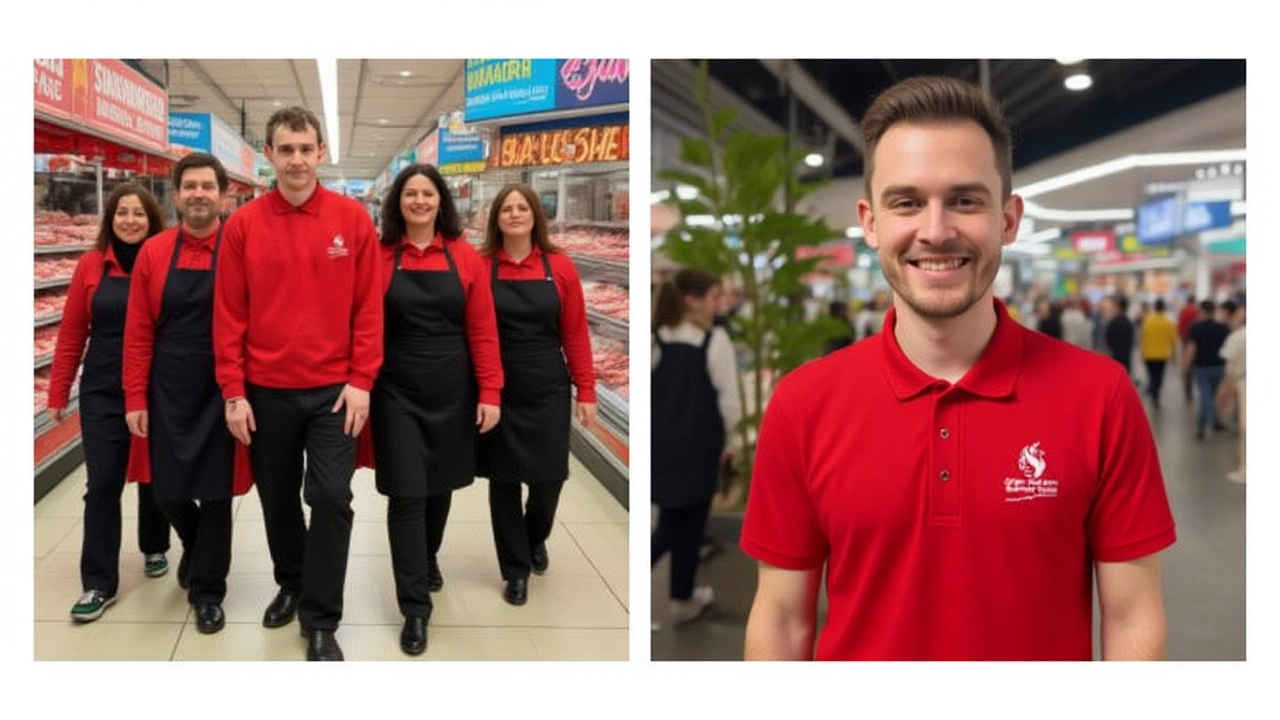At first glance, Luke Riley looks like any other market attendant—blue uniform, broom in hand, doing the quiet, unglamorous work that keeps Swansea Market running. But since March 2024, he’s become one of the most recognizable faces in southwest Wales—not because he’s a celebrity, but because he’s sweeping up fans, one TikTok video at a time. The Swansea Council launched its official Swansea Market TikTok account with no grand expectations. Now, it’s hit 1.5 million views, 8,300 followers, and over 66,800 likes, with Luke Riley at the center of the storm.
The Quiet Hero Behind the Viral Clips
Riley, 26, has worked at Swansea Market for years. His job? Door counts at closing time, restocking cleaning supplies, and keeping the stalls tidy. But when the council asked staff to help film behind-the-scenes content, Riley didn’t hesitate. He’d grown up visiting the market with his grandmother. He knew its rhythm—the clatter of butcher’s knives, the scent of fresh bread, the banter between stallholders. So he started filming. One video, titled "Walking into the weekend like… 🕺🏻," showed Riley and two older colleagues dancing to Kendrick Lamar in front of a fish stall. It went viral. The hashtags #SwanseaMarket, #Cymru, and #FYP exploded. Within weeks, teenagers who’d never set foot in an indoor market were showing up, phone cameras out, asking for selfies with "the TikTok guy." "Now people come up to me all the time—teenagers, families, even people in their 60s—saying, 'You're the TikTok guy!'", Riley told Swansea Bay News. "It's mad, but it's brilliant too."A Market Reborn Through Social Media
The numbers don’t lie. Since the TikTok account launched, daily footfall has climbed by 22% on average, according to Riley’s own door count logs. Weekends now see a 38% spike in visitors under 30—a demographic that had been declining for over a decade. The market, which opened in 1859 and is Wales’s largest indoor market, was struggling to stay relevant. Younger shoppers preferred online retailers or modern shopping centers. But now, they’re coming for the vibe. "It’s not just fun—the videos are working," Riley said. "I can see it on the ground. The figures are on the up." The campaign’s success isn’t accidental. Swansea Council deliberately hired a mix of staff—from Riley’s age to those in their 60s—to appear in videos. The result? A multi-generational cast that feels authentic. Stallholders lip-sync to Welsh folk songs. Butchers show off their knife skills. An elderly woman selling homemade cakes dances with a broom. It’s messy. It’s real. And it’s working.Leadership Praises the Grassroots Approach
Cllr David Hopkins, Swansea Council’s Deputy Leader and Cabinet Member for Corporate Services and Performance, didn’t commission a marketing agency. He didn’t hire influencers. He simply gave staff the freedom to be themselves. "All of our market staff, including Luke, continue to do a fantastic job in showcasing the very best of the market, both on the ground and online," Hopkins said. "Their enthusiasm—along with the dedication of the brilliant market traders—mean the market is attracting new visitors of all ages. It’s great to see the exposure that a creative use of social media is leading to." The campaign has become a model for other UK market authorities. Bristol, Cardiff, and even Manchester have reached out for advice. "They’re asking how we did it," Riley said. "I tell them: don’t overthink it. Just be you. The people will show up."
Why This Matters Beyond Swansea
Traditional markets across Britain have been dying off for decades—2,000 have closed since 2000. But Swansea’s TikTok strategy proves that heritage spaces aren’t relics. They’re communities waiting to be rediscovered. The secret? Authenticity over polish. Humor over hype. Real people, not polished ads. What’s more, the initiative has quietly boosted local vendors. Fishmongers report selling 40% more salmon. The pie stall now sells out by 11 a.m. on Fridays. One stallholder, 72-year-old Eileen Davies, said: "I’ve been here since 1978. I never thought I’d be dancing on TikTok. But my granddaughter says I’m famous now."What’s Next for Swansea Market?
The council plans to expand the campaign into Instagram Reels and YouTube Shorts. There’s talk of a "Market Live" weekly stream. And Riley? He’s being asked to speak at a national retail innovation conference next month. He’s nervous. "I’m just a guy with a mop," he said. "But if me dancing in a uniform gets someone to try a Welsh pasty for the first time? Then yeah. I’ll keep dancing." The market’s success isn’t about viral fame. It’s about connection. In a world of algorithm-driven content, Swansea Market reminded people that real life—messy, loud, full of laughter and fish scales—is still the most compelling story of all.Frequently Asked Questions
How has Luke Riley’s TikTok presence impacted local vendors at Swansea Market?
Local vendors have seen measurable sales boosts, with fishmongers reporting a 40% increase in salmon sales and pie stalls selling out by 11 a.m. on Fridays. The influx of younger visitors—many of whom had never shopped at the market before—has expanded the customer base, leading to higher turnover across multiple stalls. Riley’s door count data correlates directly with viral video releases, confirming the link between social media exposure and in-person sales.
What age groups are now visiting Swansea Market because of TikTok?
While the market traditionally drew older, local residents, TikTok has driven a 38% increase in visitors under 30, particularly teenagers and young adults. Surprisingly, visitors aged 50–65 have also increased by 15%, drawn by the nostalgic yet fresh vibe. The campaign’s multi-generational cast—featuring staff from 26 to 65—has made the market feel welcoming to all ages, reversing a decade-long decline in youth engagement.
How did Swansea Council manage to make TikTok work for a traditional market?
Instead of hiring influencers or professional marketers, the council empowered frontline staff to create content in their own voices. Videos featured real employees, unscripted moments, and local culture—like dancing with brooms or showcasing Welsh dialects. The authenticity resonated. No polished ads, no staged scenes. Just people doing their jobs with joy. That rawness is what made the content go viral, proving that community-driven storytelling outperforms corporate campaigns.
Is this TikTok strategy being copied elsewhere in the UK?
Yes. Bristol, Cardiff, and Manchester market authorities have already contacted Swansea Council for advice. Several are launching similar initiatives using local staff as content creators. The model is simple: find the charismatic workers, give them a camera, and let them tell the market’s story. Early results show similar upticks in footfall and youth engagement, suggesting this could become a national blueprint for revitalizing traditional retail spaces.
What’s the long-term goal for Swansea Market’s social media presence?
The council plans to expand into Instagram Reels and YouTube Shorts, with a weekly "Market Live" stream in development. They aim to turn the market into a cultural destination, not just a shopping spot. Future plans include local music performances, food festivals promoted via TikTok, and even a documentary series on the stallholders’ lives. The ultimate goal? To make Swansea Market a symbol of how tradition and technology can coexist—and thrive.
